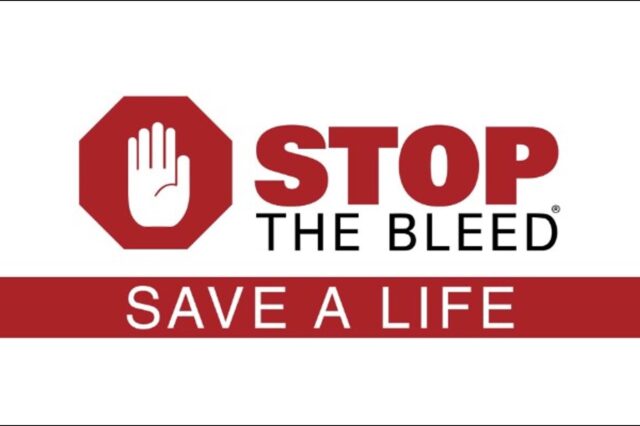STOP THE BLEED Turns Bystanders Into Lifesavers

Uncontrolled bleeding is the No. 1 cause of preventable death by injury. Tragedy can strike anyone at any time, so we need to be prepared. As more people learn how to control bleeding, lives can be saved.
Bystanders will always be first on the scene, and because someone who’s bleeding uncontrollably is at risk of dying within just 5 minutes, they’re often best positioned to provide initial care.
STOP THE BLEED is a grassroots national awareness campaign that encourages bystanders to become trained, equipped and empowered to help in a bleeding emergency before professional help arrives. UF Health, a Level 1 Trauma Center, provides a free STOP THE BLEED course that can teach anyone how to intervene.
What you’ll learn
During the course, participants learn how to recognize life-threatening bleeding and take steps to stop it. A formal presentation is followed by hands-on practice of three key techniques:
- How to use your hands to apply pressure to a wound
- How to pack a wound to control bleeding
- How to correctly apply a tourniquet
These techniques will enable you to assist in an emergency and potentially save a life.
ABCs: principles of trauma response
A – Alert
After ensuring you’re not in immediate danger, the first step is to call 9-1-1 or tell someone to call 9-1-1.
B – Bleeding
When emergency services are on the way to provide advanced medical care, you should assess the bleeding. Locate the source of the injuries. Life-threatening bleeding is a large amount of bleeding that is continuous and is enough to pool in clothing or on the ground. Clothing can affect the bleeding, so ensure you identify the wound’s specific location on the body.
C – Compress
After finding the blood’s source, applying pressure is the simplest and most effective technique to slow it. You can use your hand to apply direct, firm pressure or cover the wound with any available cloth, like a shirt or towel. Push hard and maintain the pressure until emergency responders arrive.
For severe wounds, applying pressure may not be enough. If the wound is large, pack it with any available cloth, such as a shirt or towel. They don’t need to be sterile or new. Any infection from packing material can be treated later by medical professionals, but only if the patient is alive.
A tourniquet is a valuable tool when applied appropriately and correctly to severe wounds, especially if the source of bleeding is from an extremity, such as an arm or leg.
Tourniquets are now more available and easier to use, and many people who are trained can apply a tourniquet on themselves. Applying a tourniquet requires training to ensure proper placement and tightness to control bleeding, and this is demonstrated and practiced during the course. It is important to not remove a tourniquet once applied, even if bleeding slows or stops.
If not readily accessible, tourniquets can be fashioned from everyday items. Participants in the course will learn how to make an effective tourniquet.
To be prepared to help a bleeding emergency, register for an upcoming STOP THE BLEED course.
FAQ
Q: Who can take the course?
A: STOP THE BLEED is available for anyone interested in learning a life-saving skill. Since the initiative launched in 2017, 3 million people worldwide have been trained.
Q: How is the course taught?
A: The interactive course consists of an in-person lecture, followed by a demonstration and hands-on practice.
Q: Will I receive a certificate?
A: Yes. All attendees who complete the course will receive a certificate from the American College of Surgeons recognizing your successful completion.
Q: How long is the course?
A: The course takes about one hour to complete.